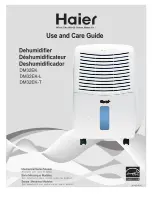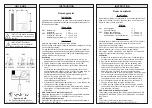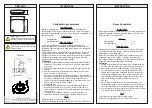
10
STEAM INJECTION INSTALLATION, OPERATION, AND MAINTENANCE MANUAL
Pressurized steam piping guidelines
OVERVIEW
• Size piping in accordance with ASHRAE recommendations.
• Humidifier's steam supply should be taken off top of steam main (not side or
bottom) to ensure the driest steam. Main should be dripped and trapped (in
accordance with ASHRAE recommendations).
• Humidifier steam trap(s) must drain by gravity to return main having little
or no back pressure. If condensate cannot drain by gravity, then it must be
elevated to return main (see Figure 12-1 for instructions).
• If steam pressure is less than or equal to 15 psi (103.4 kPa), use float and
thermostatic (F&T) traps for the humidifier.
If steam pressure is greater than 15 psi (103.4 kPa), use inverted bucket
traps for the humidifier.
• If lifting condensate, use an inverted bucket trap and check valve regardless
of steam pressure. See Figure 12-1 for instructions.
• Condensate from unavoidable heat loss in the distribution system must be
removed promptly to eliminate water hammer and degradation of steam
quality and heat transfer capability. Install drip legs at all low points and
natural drainage points in the system, such as at ends of mains; bottoms of
risers; and ahead of pressure regulators, control valves, isolation valves,
pipe bends, and expansion joints.
On straight, horizontal runs with no natural drainage points, space drip
legs at the following intervals:
– Not exceeding 300' (91 m) when the pipe is pitched down in the
direction of the steam flow
– At a maximum of 150' (46 m) when the pipe is pitched up, so that
condensate flow is opposite of steam flow.
These distances apply to systems where valves are opened manually to
remove air and excess condensate that forms during warm-up conditions.
Reduce these distances by about half in systems that are warmed up
automatically.
• Insulate piping well to avoid unnecessary heat loss.
• Pitch return lines downward in the direction of the condensate flow at 1/2"
per 10' (0.4%).
mc_051011_1544













































